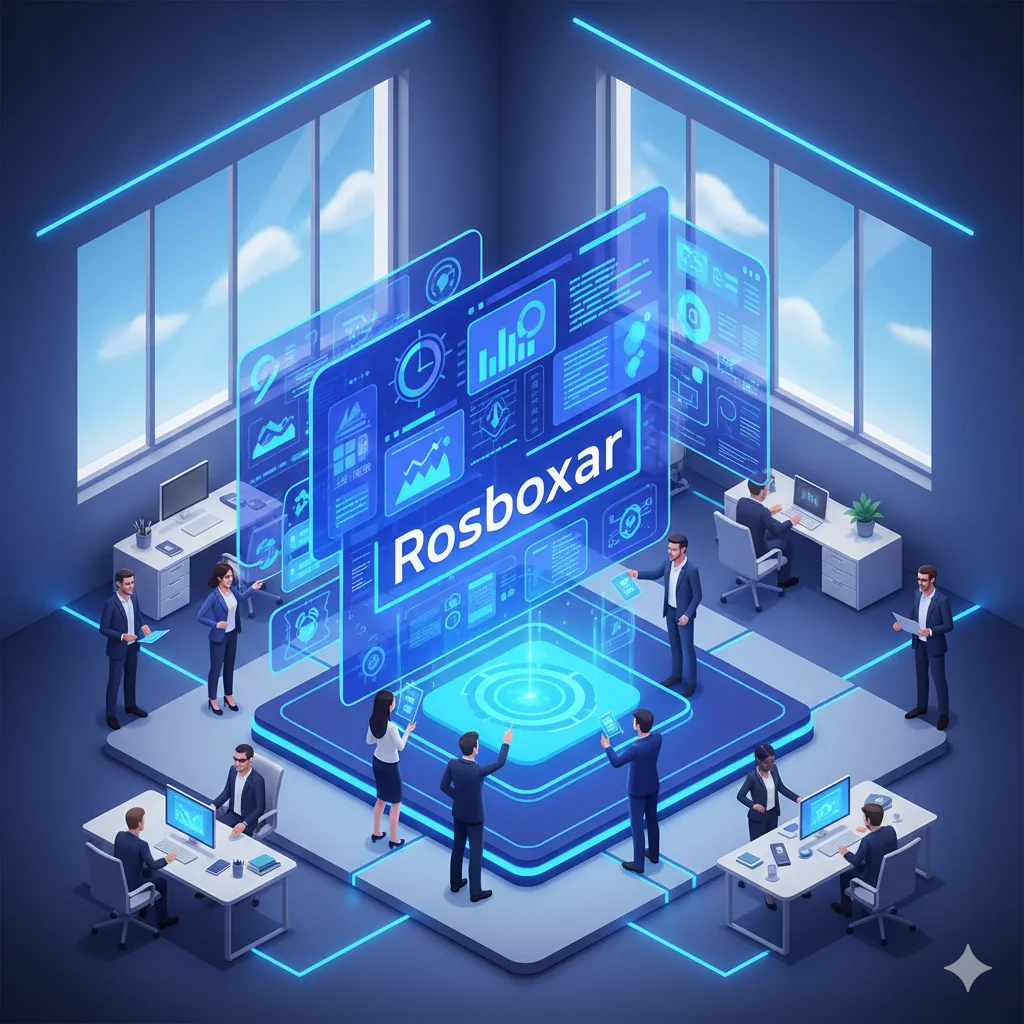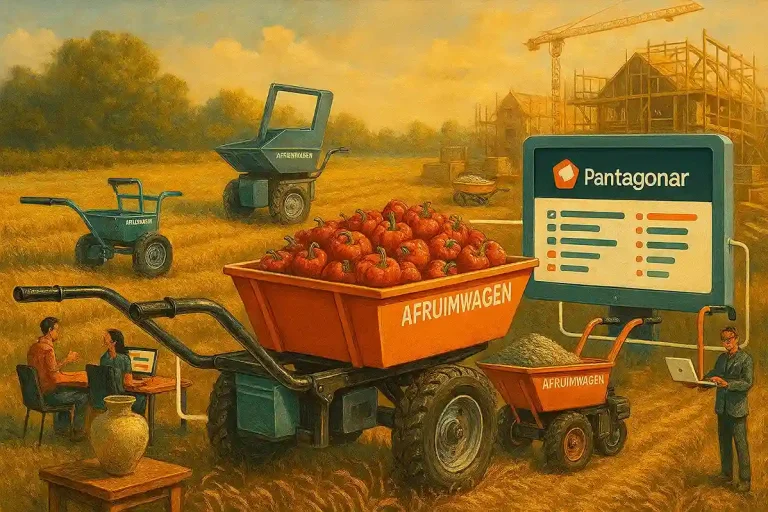Rosboxar: Unlocking Innovation and Modern Possibilities in 2025

Introduction: The World Is Moving Too Fast for Old Frameworks
Picture this: you’re building a business system, a classroom lesson plan, or even a new app. Traditionally, you’d need to map everything out, lock in decisions early, and hope the world doesn’t shift under your feet. But in 2025, that’s not realistic. Technology changes weekly, industries pivot overnight, and creativity has to be as fluid as water.
Now imagine if innovation worked like LEGO blocks. You could snap on new ideas, remove outdated ones, and reconfigure solutions without starting from scratch. That’s the spirit of Rosboxar.
Rosboxar isn’t a gadget you buy. It’s not an app you download. It’s a framework, philosophy, and toolkit for adaptability — one that blends technology, modular design, and creativity to help individuals and organizations thrive in an unpredictable future.
Let’s dive into what Rosboxar means, where it applies, and why it could reshape the way we live, learn, and work.
What Is Rosboxar? (And Why Should You Care?)
In simple terms, Rosboxar is about modularity and adaptability. Instead of rigid, one-size-fits-all systems, it promotes frameworks that can grow and change with you.
Think of it as:
- For business: A startup pivoting without throwing away its entire strategy.
- For design: An artist reusing modular pieces to create something new every time.
- For daily life: You reorganizing your personal projects into flexible “blocks” that fit your current goals.
Unlike traditional models, Rosboxar isn’t chained to a single industry. It can live in software development, education, design, business innovation, or even personal productivity.
And that’s what makes it powerful: it’s everywhere once you start seeing it.
The Philosophy: Logic Meets Imagination
Rosboxar is more than a buzzword — it’s built on a philosophy of innovation through integration. Instead of separating technology from creativity, or structure from imagination, Rosboxar says: Why not both?
Its philosophy rests on three pillars:
- Adaptability – Tools should evolve with changing needs, not block them.
- Collaboration – Barriers between tech, design, and business should fall.
- Empowerment – Whether you’re an individual or an enterprise, you should achieve more with less friction.
In short, Rosboxar is like a bridge between logic and creativity. It’s structured enough to keep you grounded, but flexible enough to spark wild ideas.
Real-World Applications of Rosboxar
The reason Rosboxar is catching on? It’s not just theory. It’s being applied across different fields in ways that feel both futuristic and practical.
1. Technology and Software Development
Rosboxar provides a framework for modular development.
- Developers can build apps that update in parts instead of being rebuilt from scratch.
- Startups can adopt Rosboxar frameworks to pivot quickly and stay lean.
- Enterprises can scale smoothly by adding “modules” instead of reworking entire infrastructures.
💡 Example: A SaaS company launches a platform with only essential features. As customers’ needs grow, new Rosboxar-inspired modules snap in seamlessly — saving time and costs.
2. Design and Creative Industries
In creative spaces, Rosboxar is freedom with structure.
- Architects test modular concepts in sustainable building design.
- Graphic designers reuse adaptable templates for faster workflows.
- Digital artists build interactive installations that evolve with audience input.
💡 Example: An art gallery installs a Rosboxar-inspired exhibit where modular panels light up differently depending on visitor movement, creating new experiences daily.
3. Business Innovation
Rosboxar helps businesses stay agile in a fast-changing world.
- Encourages rapid prototyping and “fail fast, improve fast” culture.
- Lets teams with different skill sets collaborate without silos.
- Makes small businesses competitive by lowering costs of scaling.
💡 Example: A café uses Rosboxar thinking to transform its menu. Instead of permanent changes, it introduces modular seasonal options that adapt to customer demand.
4. Education and Learning
Education thrives when it adapts — and Rosboxar fuels that adaptability.
- Teachers design modular lesson plans that can shift for in-person, online, or hybrid formats.
- Students learn creative problem-solving by experimenting with modular systems.
- Institutions use Rosboxar-inspired digital platforms for personalized learning.
💡 Example: A school builds a Rosboxar-style STEM lab where lessons can be reconfigured into modules on robotics, coding, or sustainability depending on student interest.
5. Personal Life and Lifestyle
Even outside work or school, Rosboxar can shape your day-to-day.
- Organize projects into adaptable “blocks” instead of rigid to-do lists.
- Apply modular thinking to creative hobbies like music or DIY.
- Manage time flexibly, adjusting modules based on energy and priorities.
💡 Example: Instead of one overwhelming fitness plan, you build modular routines — strength block, cardio block, flexibility block — swapping them depending on mood or schedule.
Top Benefits of Rosboxar
Why is Rosboxar gaining traction? Because it delivers real, human-centered benefits:
- Flexibility → Works across industries, scales, and personal projects.
- Scalability → Grows with you, without costly rebuilds.
- Efficiency → Breaks complex problems into manageable parts.
- Creativity → Provides space to test, fail, and innovate.
- Collaboration → Encourages teamwork across different disciplines.
- Future-Proofing → Built for fast-changing tech landscapes.
Rosboxar vs. Traditional Frameworks
| Feature | Traditional Frameworks | Rosboxar |
|---|---|---|
| Structure | Rigid, fixed models | Modular, adaptive, customizable |
| Scalability | Costly, slow upgrades | Seamless, incremental growth |
| Collaboration | Often siloed teams | Cross-disciplinary, integrated |
| Creativity | Limited by rules | Encourages experimentation |
| Future-readiness | Struggles to keep up | Designed to evolve continuously |
The Future of Rosboxar
Rosboxar is only beginning its journey. Looking ahead, we can expect:
- AI Integration → Smarter, intuitive modular systems that anticipate needs.
- Global Collaboration → Platforms powered by Rosboxar enabling worldwide teamwork.
- Sustainability → Eco-friendly solutions thanks to efficient modular design.
- Next-Gen Education → Adaptive classrooms preparing students for a fluid workforce.
It’s not just about efficiency. It’s about shaping a world where innovation is accessible and adaptable to all.
Challenges and Considerations
No framework is perfect. Rosboxar has hurdles:
- Awareness → Many people still don’t know what it is.
- Implementation Costs → Upfront investment in training and modular systems.
- Over-Flexibility Risks → Without structure, modularity can turn into chaos.
Like any innovation, Rosboxar will need champions to balance flexibility with stability.
Try It Yourself: The Rosboxar Challenge
Want to bring Rosboxar thinking into your own life? Try this:
- Pick a project — work, school, or personal.
- Break it into modules — instead of one giant task, create smaller blocks.
- Adapt on the fly — swap, expand, or remove modules as your needs change.
- Collaborate modularly — assign different blocks to different people.
💡 Example: Planning a trip? Break it into flight block, accommodation block, food block, adventure block. Need to cut costs? Swap out the adventure block without scrapping the whole plan.
Why Rosboxar Matters in 2025
We live in a blurred world — technology blends with art, creativity mixes with business, education overlaps with entertainment. People don’t just need tools anymore; they need living frameworks.
Rosboxar matters because it:
- Helps us keep up with rapid change.
- Bridges silos between industries.
- Empowers individuals to innovate in their own lives.
It’s not a framework you follow. It’s a mindset you adopt.
Conclusion: Think Rosboxar, Live Rosboxar
Rosboxar isn’t a product on a shelf — it’s a philosophy of adaptability. By blending modular design, creative freedom, and scalable efficiency, it has the potential to redefine industries, transform classrooms, and inspire individuals worldwide.
Whether you’re coding the next great app, designing a sustainable building, or simply organizing your week, thinking in Rosboxar terms can help you adapt faster, create smarter, and innovate better.
As the digital age accelerates, Rosboxar is a reminder: the most powerful innovations aren’t the ones that lock us into rigid structures. They’re the ones that grow, change, and evolve with us.
So ask yourself: Where could Rosboxar thinking unlock new possibilities in your world today?
FAQs About Rosboxar
What is Rosboxar in simple terms?
It’s a modular, adaptive framework that blends technology and creativity to make innovation more flexible.
Is Rosboxar a product?
No — it’s a philosophy and toolkit, not one specific product.
Which industries use Rosboxar?
Technology, design, business, education, and even personal productivity.
Why is Rosboxar important in 2025?
Because it helps individuals and organizations adapt quickly to change.
What’s the biggest advantage of Rosboxar?
Its flexibility — it grows with you instead of forcing you to start over.






